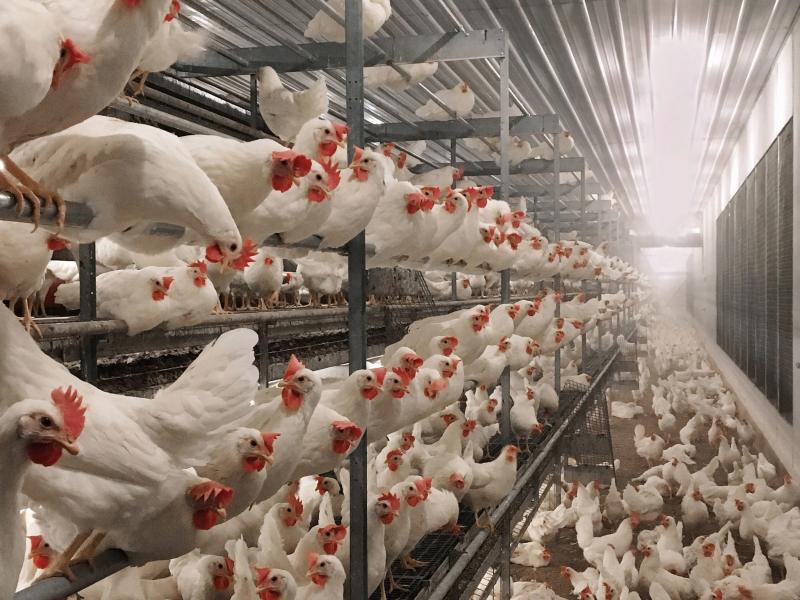
Differences between Layer and Broiler Farming in Nigeria
Layer farming in Nigeria and broiler farming in Nigeria are two major sectors of the poultry industry that play a significant role in meeting the country’s demand for eggs and meat. While both require specialized knowledge and equipment, there are distinct differences between these two types of poultry farming practices.
1. Purpose and Production Cycle:
One of the key differences between layer farming and broiler farming in Nigeria is the purpose of raising the birds. Layer farming is primarily focused on the production of eggs, while broiler farming is geared towards the production of meat. In layer farming, hens are raised specifically for laying eggs, which are then collected and sold for consumption or further processing. On the other hand, broiler farming involves raising chickens for their meat, with a focus on rapid growth to achieve optimal weight for slaughter within a short period.
2. Breeds and Management Practices:
Another important distinction between layer and broiler farming lies in the choice of breeds and management practices. In Nigeria, specific breeds of chickens are selected for each type of farming based on their characteristics and suitability for the intended purpose. Layer farming typically involves breeds such as Isa Brown or Lohmann Brown, known for their high egg-laying capacity and efficiency. These breeds require specific feeding and lighting conditions to maximize egg production. In contrast, broiler farming in Nigeria often utilizes fast-growing breeds like Ross 308 or Cobb 500, which are bred for their rapid weight gain and meat quality. Broilers require a different feeding regimen and management approach to support their growth and development for meat production.
3. Housing and Environment:
The housing and environmental requirements for layer farming and broiler farming also differ significantly. Layers require well-ventilated and spacious housing structures equipped with nesting boxes for egg-laying, perches for resting, and feeders/waterers placed at appropriate heights. The lighting system is crucial in layer farming to stimulate egg production and maintain a consistent laying cycle. Broilers, on the other hand, need controlled environment housing with proper ventilation, heating, and cooling systems to regulate temperature and humidity levels. The design of broiler houses is tailored to accommodate the rapid growth rate of the birds and ensure efficient feed conversion.
4. Feed and Nutrition:
Feed formulation and nutrition management represent another key difference between layer and broiler farming practices in Nigeria. Layers have specific dietary requirements to support egg production, including a balanced mix of protein, vitamins, minerals, and calcium for strong eggshells. Broilers, on the other hand, require high-protein diets with a focus on rapid muscle development and weight gain. The feed composition and feeding schedule are carefully planned in broiler farming to achieve the desired growth rates and meat quality standards. Additionally, factors like feed conversion ratio and cost of feed play a critical role in the profitability of broiler farming operations.
5. Marketing and Distribution:
The marketing and distribution channels for layer and broiler products in Nigeria also exhibit variations based on consumer preferences and market demand. Eggs from layer farming are typically sold through wholesalers, retailers, supermarkets, and direct-to-consumer channels to cater to households, bakeries, restaurants, and food processing companies. The packaging and storage of eggs are crucial to maintain freshness and quality throughout the supply chain. In contrast, broiler meat is marketed to butchers, meat processors, fast-food chains, and retail outlets for sale to consumers. The packaging, labeling, and distribution of broiler products are tailored to meet hygiene standards, safety regulations, and consumer expectations regarding meat quality and freshness.
In conclusion, layer farming and broiler farming in Nigeria present distinct operational characteristics, management practices, and market dynamics that differentiate them as unique sectors within the poultry industry. Understanding the key differences between these two farming systems is essential for poultry farmers to optimize productivity, profitability, and sustainability in their operations. By leveraging the right breeds, resources, technologies, and market strategies, both layer and broiler farmers can contribute effectively to meeting the growing demand for eggs and meat in Nigeria’s agricultural sector.


